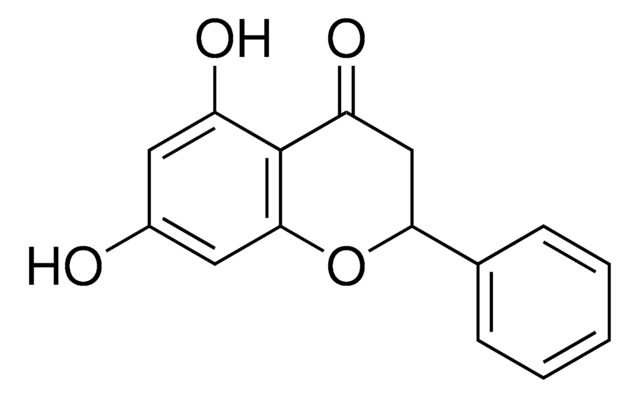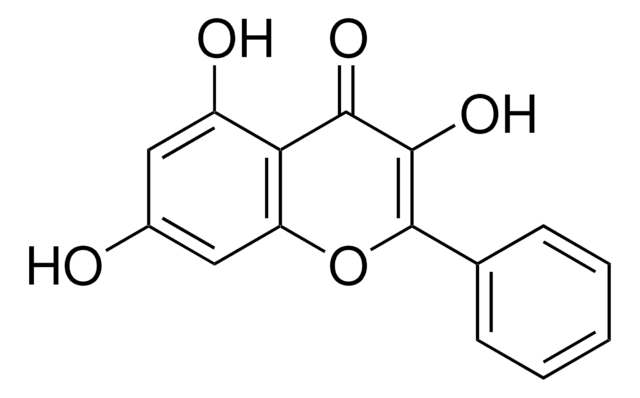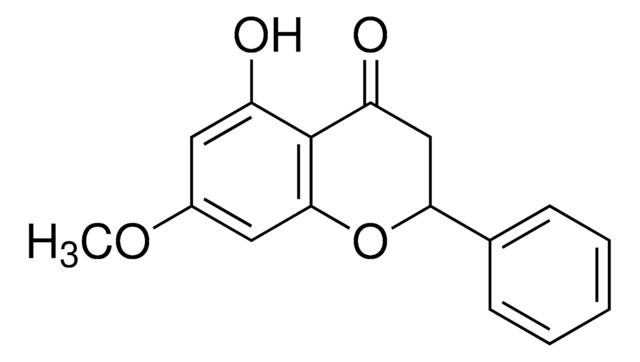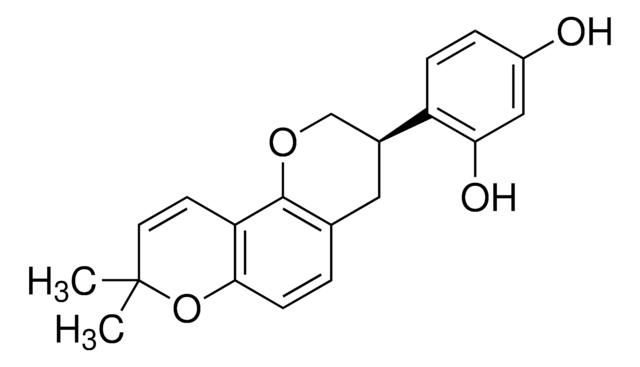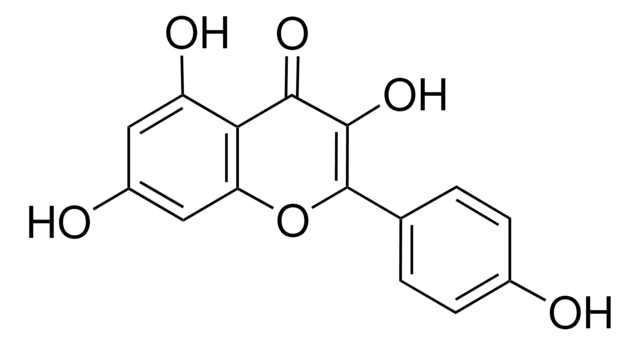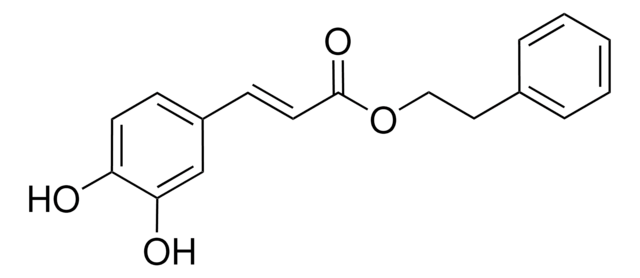P5239
Pinocembrin
analytical standard, ≥95.0% (HPLC), solid
About This Item
Prodotti consigliati
Grado
analytical standard
Livello qualitativo
Saggio
≥95.0% (HPLC)
Forma fisica
solid
tecniche
HPLC: suitable
gas chromatography (GC): suitable
Punto di fusione
194-195 °C (lit.)
applicazioni
food and beverages
Formato
neat
Temperatura di conservazione
2-8°C
Stringa SMILE
OC1=C(C(C[C@@H](C2=CC=CC=C2)O3)=O)C3=CC(O)=C1
InChI
1S/C15H12O4/c16-10-6-11(17)15-12(18)8-13(19-14(15)7-10)9-4-2-1-3-5-9/h1-7,13,16-17H,8H2/t13-/m0/s1
URFCJEUYXNAHFI-ZDUSSCGKSA-N
Descrizione generale
Applicazioni
Avvertenza
Codice della classe di stoccaggio
11 - Combustible Solids
Classe di pericolosità dell'acqua (WGK)
WGK 2
Punto d’infiammabilità (°F)
Not applicable
Punto d’infiammabilità (°C)
Not applicable
Dispositivi di protezione individuale
Eyeshields, Gloves, type N95 (US)
Scegli una delle versioni più recenti:
Possiedi già questo prodotto?
I documenti relativi ai prodotti acquistati recentemente sono disponibili nell’Archivio dei documenti.
I clienti hanno visto anche
Articoli
Antioxidants protect biological systems from oxidative damage produced by oxygen-containing free radicals and from redoxactive transition metal ions such as iron, copper, and cadmium.
Il team dei nostri ricercatori vanta grande esperienza in tutte le aree della ricerca quali Life Science, scienza dei materiali, sintesi chimica, cromatografia, discipline analitiche, ecc..
Contatta l'Assistenza Tecnica.